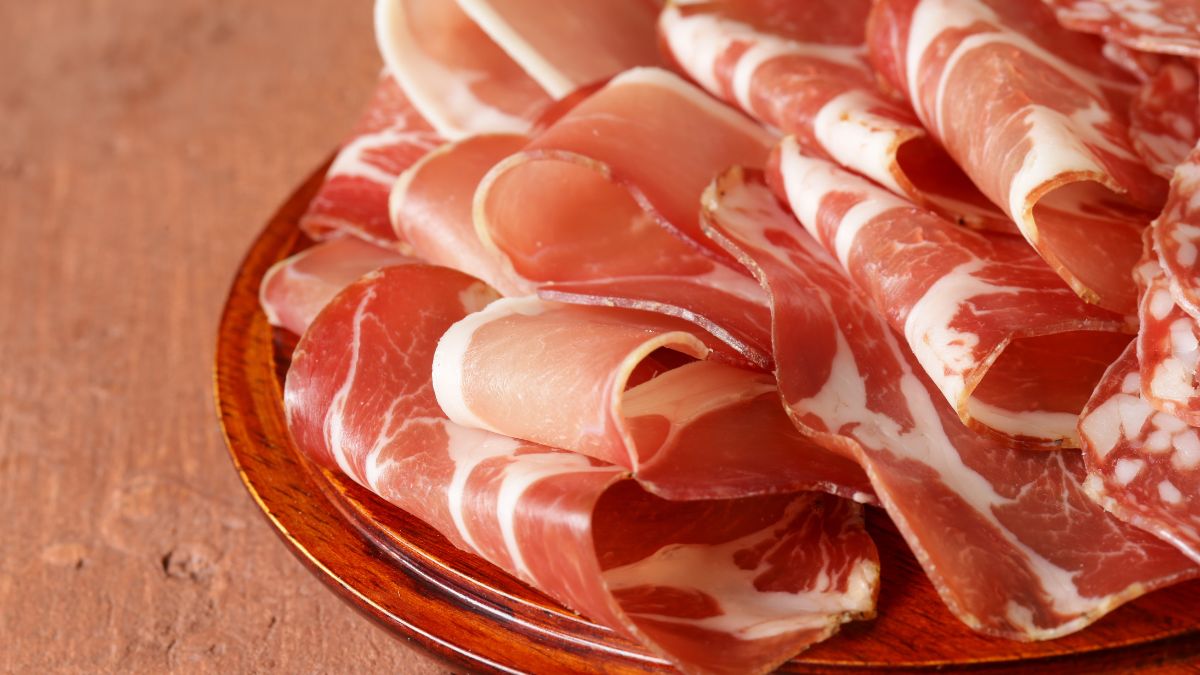Short Answer: If you accidentally eat bad prosciutto, you may get food poisoning from bacteria that can grow on the cured meat.
Prosciutto is a type of cured ham that comes from the hind leg of a pig.
It is usually thinly sliced and eaten raw, but it can also be cooked or used as an ingredient in various dishes.
Prosciutto is made by salting, drying, and aging the meat for several months or even years.
Prosciutto has a sweet and salty flavor and a soft texture that melts in the mouth.
If you accidentally eat bad prosciutto, you may experience symptoms such as nausea, vomiting, diarrhea, fever, or abdominal pain.
This is because it may contain harmful bacteria, such as Listeria, Salmonella, or E. coli, that can cause food poisoning.
These bacteria can survive the curing process if the prosciutto is not properly salted, dried, or stored.
Bacteria can also grow on prosciutto if it is exposed to air, moisture, or high temperatures.
You can tell if prosciutto has gone bad by looking for signs of discoloration, mold, or foul odor.
Prosciutto should have a pink to red color, a pleasant porky smell, and no visible mold or slime.
It is quite uncommon to eat bad prosciutto, as it is usually well-preserved and has a long shelf life.
However, it can happen if the prosciutto is not handled or stored properly, or if it is past its expiration date.
You can prevent eating bad prosciutto by buying it from a reputable source, checking the label for freshness, and keeping it refrigerated or frozen until use.
You can also avoid eating bad prosciutto by slicing it only when needed, and wrapping the unused portion tightly in plastic wrap or foil.
You should also discard any prosciutto that looks or smells suspicious, or that has been left out of the fridge for more than two hours.
If you do eat bad prosciutto and develop symptoms of food poisoning, you should drink plenty of fluids, rest, and seek medical attention if the symptoms are severe or persist for more than 24 hours.
You may also need antibiotics or other treatments depending on the type of bacteria involved.
Finally, remember, prosciutto is a delicious and nutritious food that can be enjoyed in moderation as part of a balanced diet.
It is rich in protein, iron, zinc, and vitamin B12, and it can also provide some healthy fats and antioxidants.
Read Next
However, it is also high in sodium, saturated fat, and cholesterol, and it may contain nitrates or nitrites that can have negative effects on health.
Therefore, you should limit your intake of prosciutto to no more than a few slices per week, and pair it with fresh fruits, vegetables, or whole grains for a complete meal.

